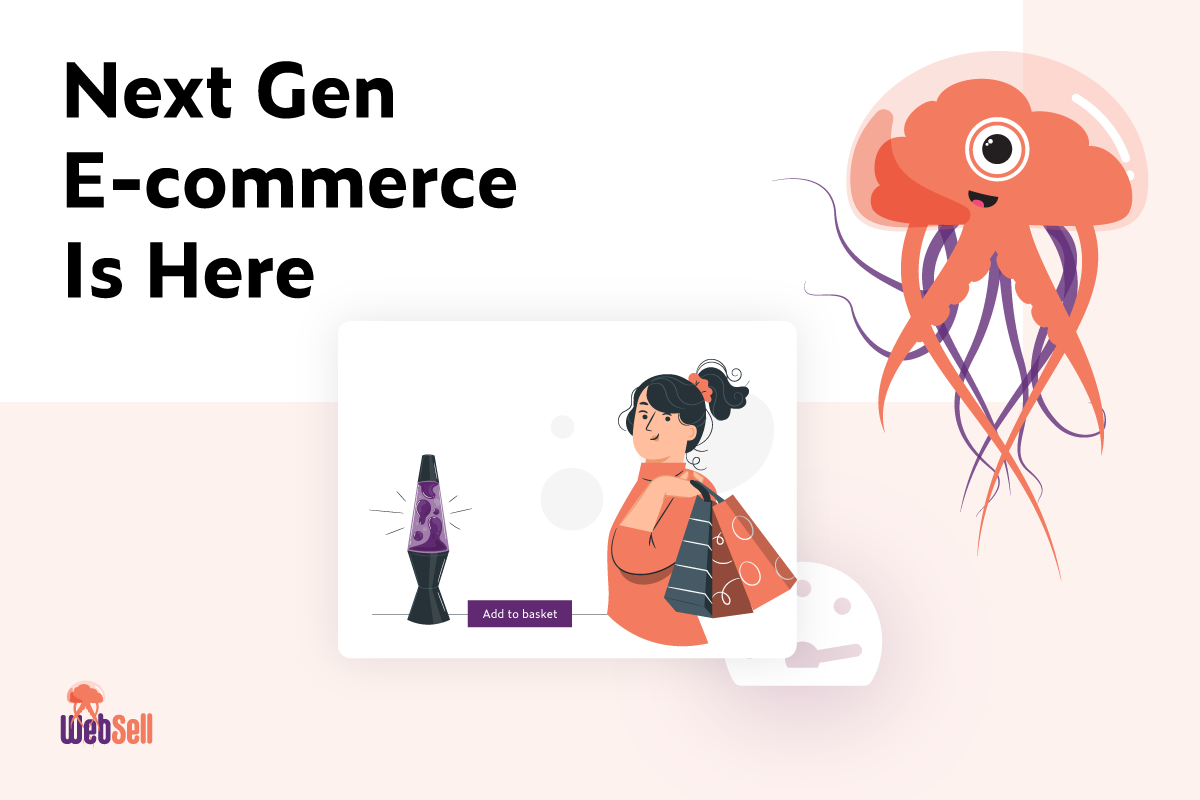If you own an e-commerce store, you know that the design of your website can have a major impact on your sales and customer experience. A well-designed website should be easy to use, modern, and attractive. According to a recent survey, 42% of people will leave a website due to poor functionality.
Unfortunately, many websites haven’t been updated in years, leading to outdated designs that don’t reflect the current state of online shopping. Without an updated site design, your marketing efforts might be wasted. Google now rewards well-designed sites that give customers what they want in as few clicks as possible.
But how do you know when your site is serving your customers sufficiently or when it needs a makeover? There’s a few different aspects to analyze your site under and it all comes down to how users are currently using your site. This is called user experience and it is vital to understand when looking to scale your online sales.
In this post we’ll show you how to tell when your site is in need of some web design TLC by introducing you to these concepts and showing you how web design can deliver them.
1. Is your website hard to use?
User experience is everything when it comes to e-commerce. If your website feels clunky or frustrating to navigate, customers won’t stick around. The goal is simple: make it easy for shoppers to find what they need, fast. While the “three-click rule”—the idea that users should find what they’re looking for in three clicks—has been challenged recently, the principle still holds true. Simplicity wins.
Take a moment to put yourself in your customers’ shoes. How long does it take to find a product or category? If it feels like a chore, chances are your customers feel the same—and they’ll likely head to a competitor instead.
The fix? Thoughtful design. Highlight your best sellers or top categories right on the homepage. Make sure your menus are intuitive and your search bar works like a charm. And don’t forget to test your site yourself—if you’re getting stuck or confused, your customers probably are too. A user-friendly website keeps shoppers happy and coming back for more.
2. Is your website hurting your search rankings?
Your site design doesn’t just impact your customers—it also influences your position on Google. When deciding who gets to claim the top spot on search results pages, Google doesn’t stop at written content. User experience (UX) is a key factor, and if your site isn’t responsive or mobile-friendly, it’s already losing out. Visitors who leave your site quickly because of poor design send bad signals to search engines, and it can cost you in rankings.
SEO is another critical piece of the puzzle. To rank higher, your site needs a solid SEO strategy, which means using the right keywords in the right places—on-page content, meta descriptions, titles, and URLs. Features like meta tags and image alt text also help boost visibility and improve your chances of landing on that first search results page.
Poor UX and SEO don’t just harm your rankings; they can also increase your advertising costs. If you’re running paid search ads, Google might lower your ad score and increase your cost per click due to a subpar website experience.
As you plan your next website redesign, take a close look at your SEO profile. What keywords do you need to rank higher for? Are visitors staying on your site, or are they leaving frustrated? Focusing on UX and SEO together can make a major difference in both your rankings and your sales.
💡 Further Reading: E-commerce SEO – The Complete Guide (2025)
Check out our complete guide to e-commerce SEO in 2025. You’ll learn about keyword research, on-page SEO, site architecture, and more!
3. Is your website mobile-friendly?
Back in 2015, Google shook the internet with “Mobilegeddon,” an update to their algorithm that penalized sites without mobile-friendly designs. Why? Because mobile searches officially surpassed desktop searches—and they haven’t slowed down since. Today, mobile traffic accounts for a staggering 58% of all web traffic. If your site isn’t optimized for mobile, you’re likely missing out on traffic, sales, and loyal customers.
Mobile-friendly design is no longer optional; it’s essential. Your site needs to look great and function seamlessly on smaller screens. This means properly sized images, buttons that are easy to tap, and pages that load quickly—because no one has the patience to wait for a slow-loading site. Want to know how your site stacks up? Google offers a free mobile-friendly test that’s worth checking out.
If you’re serious about growing your e-commerce store, make sure your next website redesign prioritizes mobile responsiveness. A mobile-optimized site isn’t just nice to have—it’s the key to staying competitive in today’s market.
4. Is your website too slow?
Did you know that 1 in 2 visitors will leave your site if it takes more than three seconds to load? Slow websites don’t just frustrate users—they drive them away. If your pages lag behind, potential customers will “bounce” before they even see what you have to offer. On top of that, search engines like Google penalize slow-loading sites by ranking them lower in search results, further shrinking your visibility.
But it’s not just about speed—it’s about trust. In today’s fast-paced digital world, a slow website can make your business look outdated or unreliable. And the impact doesn’t stop there: slow load times hurt sales, especially when it comes to customers making quick decisions at checkout. Want to keep shoppers engaged and boost your bottom line? Prioritize speed in your next website redesign—it’s one of the simplest ways to improve user experience and maximize conversions.
5. Does your site look outdated?
First impressions matter, and if your website looks like it hasn’t been touched in years, potential customers might think twice about buying from you. An outdated site can feel clunky, unpolished, and out of step with modern web design trends—qualities that can quickly erode trust. If your navigation is confusing or your site lacks features like an optimized search bar or accessible customer support, users may give up and head to a competitor.
A dated website doesn’t just hurt usability—it hurts your reputation. Customers expect professionalism and a sleek design that reflects your business’s quality and credibility. If your site feels neglected, visitors may assume your products or services are too. A fresh, modern redesign can signal to shoppers that you’re a brand that’s current, trustworthy, and worth their business.
How can you fix your site?
If you’re a WebSell retailer, upgrading to our Next Gen theme is the simplest way to bring your site in line with modern design trends. These themes are built for speed, helping your site rank higher in search results while boosting site visits and sales. Want to give your online store a fresh look? Reach out to our team to explore your redesign options or learn more below!
Next Gen: The fastest shopping experience on the WebSell e-commerce platform
WebSell retailers can now get a hyper-fast online webstore with an intuitive user experience. Explore Next Gen E-commerce by WebSell.
Conclusion
A website redesign is often overdue if you’re noticing signs like poor performance, outdated design, or customer frustration. Take advantage of the tools at your disposal to assess how users currently interact with your site—you might uncover valuable insights that shape your next project.
The rewards of a redesign go beyond just aesthetics. From creating a seamless user experience and improving SEO to ensuring faster mobile load times, updating your site can drive higher sales and greater customer satisfaction. So, if your site needs an upgrade, now’s the time to act—it’s an investment you won’t regret!
-

WebSell vs. Shopify Plus: Which Is Better for B2B E-Commerce?
When it comes to B2B e-commerce, choosing the right platform can make or break your operations. For companies running Microsoft Dynamics 365 Business Central, the biggest question is: Should you use a general-purpose platform like Shopify Plus, or a purpose-built integration like WebSell? Both can power online selling. The real question is: Which one makes…
-

5 Tips for Managing E-commerce During Your Busiest Season
For many retailers, sales aren’t spread evenly throughout the year. Seasonal businesses, like Shuswap Ski & Board, Canada’s #1 watersports pro shop, make the majority of their revenue in just a few months. That means their e-commerce store has to perform at peak levels when the pressure is highest. So, how can other retailers handle…


